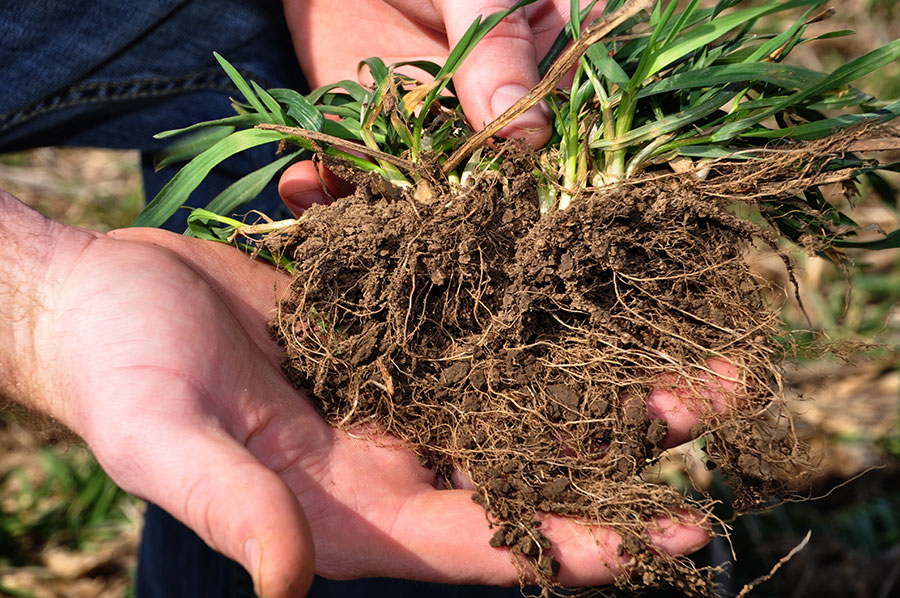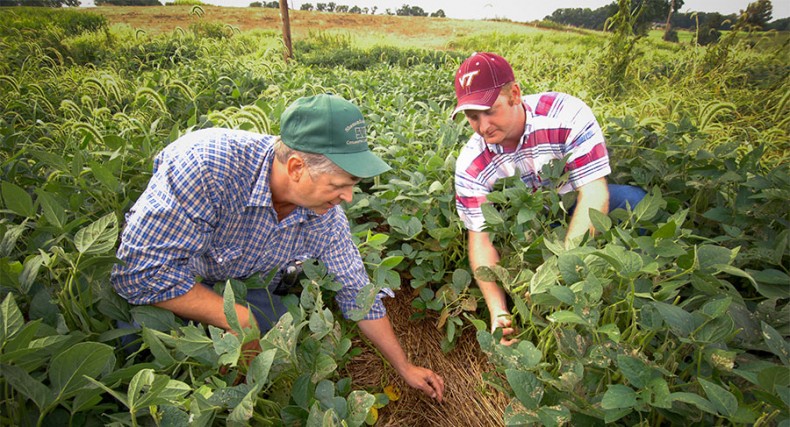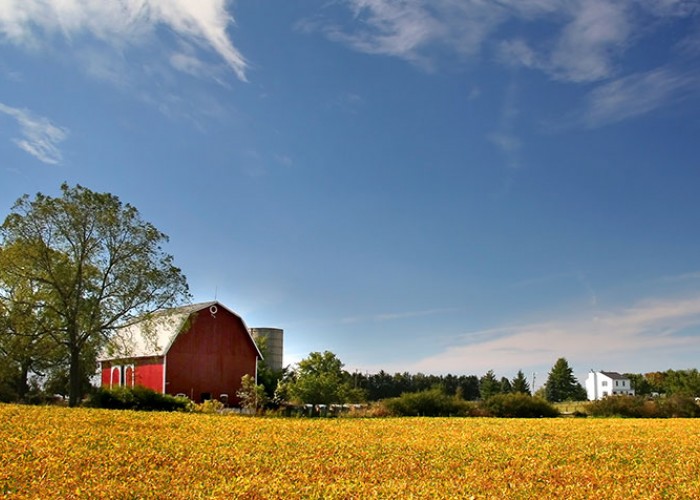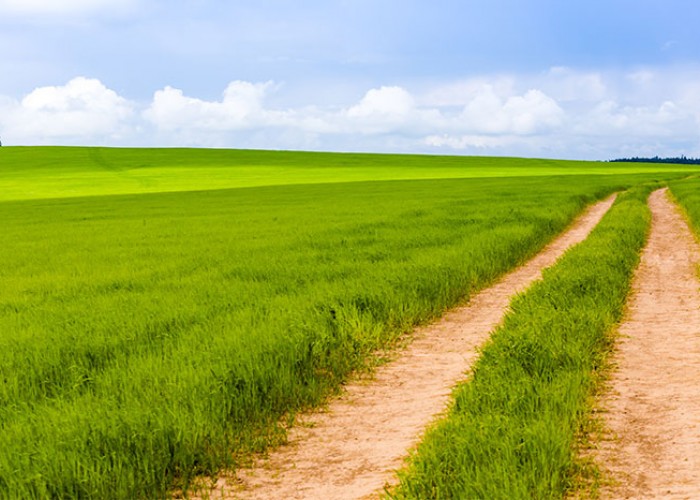Save Energy in the Garden
Skip the tilling for efficiencies all around
By Pat Keegan and Brad ThiessenNo-till growing can be done on commercial farms as well as home gardens.
The weather is warming and gardens are getting attention after a cold winter. But can home gardeners save energy when planting? Using a few techniques, the answer is yes.
One approach to gardening we’ve been excited about lately is no-till, also known as no-dig. No-till gardens have been gaining ground with farmers in recent years, partly because of the energy savings. The principles behind no-till gardening work well for large farms, as well as smaller home gardens. No-till can be done without chemicals. Research shows that this approach can produce more fruits and vegetables within a few years, and they get better over the long term. Best of all, this approach to gardening takes less time and effort — and you won’t even have to fire up the rototiller!
Two ideas are at the heart of no-till gardening. First, don’t break up the soil. We usually think that by breaking up the soil and mixing it up, we keep weeds from growing. But tilling can bring weed seeds that are deep in the soil to the top where they can germinate and grow. Tilling also destroys microbes in the soil that bring nutrients to the plants.
The second idea is to spread thick layers of compost and other mulch on top of the soil. When compost and other mulch are spread on top, they feed the soil from above, the same way leaves in a forest fall to the ground, decompose and turn into rich soil over time. When you build up the soil by spreading layers of compost and other mulch on top, the weed seeds are kept dormant. Mulch keeps the soil moist, so less water is used to irrigate, which means less electricity use for pumping water from your well or community water system.
When you build up the soil by spreading layers of compost and other mulch on top, the weed seeds are kept dormant.
Your no-till garden can be planted at ground-level or in raised beds. Start by laying weed-blocking material on top of the old dirt. Sheets of cardboard are often used because they will decompose over time. Then spread at least 4 inches of weed-free soil or compost on top.
If the soil under the cardboard is reasonably loose, you can probably start planting right away. Your garden may be less productive the first year, but will grow healthier and have less weeds every season from then on. If the ground is heavily compacted or clay, you may have to till in some compost or healthy soil before laying down the cardboard and give it a year for the new mix to get looser.

Cereal rye is one of many cover crops that can be planted in the no-till garden over the winter to help build soil health.
In the fall, you can cut the dead plants at ground level and leave the roots in the ground to decompose over the winter. You may also want to plant a cover crop, like peas, fava beans or barley late in the growing season. Setting up a no-till garden takes a fair bit of work, but it will require less maintenance in the future and get healthier every year.
If you’re ready to try your hand at planting a no-till garden, many colleges and universities offer extension classes for folks who are not enrolled as students. You can also watch a variety of videos online that can guide you through setup and long-term care.
Here are a few additional tips that can help you reduce energy use related to gardening:
- Drip systems lose less water to evaporation.
- Timers are a convenient way to control irrigation, but be sure to override the timer and shut off watering cycles when a rain shower can do the job.
- Purchase a rain barrel for energy efficient watering. (Learn more about efficient irrigation in Wrestling Water in Your Landscape — and Winning!)
- Learn how to store your produce to reduce waste (Find our more about farming best practices in Energy Efficiency on the Farm)
We hope these tips will help you prepare for a more energy efficient garden this season. Happy planting — and eating!
-
Power farming!
-
Share this story:






